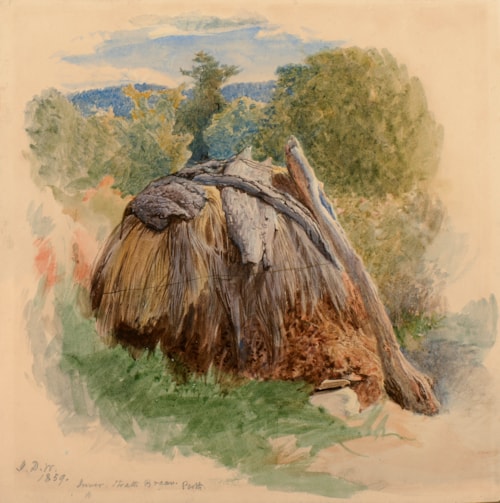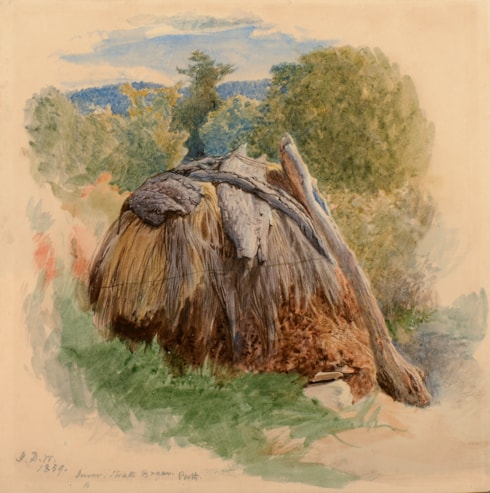
John Dawson WATSON
Sedbergh 1832 - Conwy 1892
Biography
Born in Yorkshire, John Dawson Watson showed artistic promise at an early age. He studied at the Manchester School of Design from 1847 onwards, and from 1851 at the Royal Academy Schools in London. In the same year his first exhibited work, entitled The Wounded Cavalier, was shown in Manchester. In 1856 he came to the attention of Ford Madox Brown, who invited Watson to exhibit his work at his home in London. Settling in London in 1860, Watson began exhibiting at the Society of Painters in Watercolours and the Royal Academy, where he sent works between 1853 and 1890. He was elected an Associate Member of the Society of Painters in Watercolours in 1864, becoming a full member five years later. Settling in Surrey, Watson exhibited over 370 works in London; at the Royal Academy, the British Institution, the Grosvenor Gallery and the Society of British Artists.
Watson’s oeuvre is made up largely of small oil paintings and highly detailed watercolours of historical and genre scenes, as well as the occasional pastoral subject, executed in a manner strongly influenced by the example of the Pre-Raphaelites, and with a similar emphasis on colour and detail. Watson’s landscapes were much praised by John Ruskin in particular, while the early 20th century scholar Forrest Reid noted that he ‘was a sound draughtsman whose work frequently surprises us by its power and beauty.’ Watson also enjoyed a highly successful career as a graphic artist and a book and magazine illustrator, notably producing a series of drawings for John Bunyan’s Pilgrim’s Progress, published in 1861, and Daniel Defoe’s Robinson Crusoe, which appeared three years later. He also made etchings and designs for furniture, medals and theatre costumes. A large retrospective exhibition of Watson’s work, organized by friends of the artist, was held at the Brazenose Club in Manchester in 1877, and contained nearly 160 works. The last years of his career were spent in Conwy in North Wales, where he was engaged on a program of decoration for the Castle Hotel there, and where he died in the early days of 1892. Works by Watson are today in the collections of the National Gallery of Scotland in Edinburgh, the Victoria and Albert Museum and the Tate in London, the Castle Museum and Art Gallery in Norwich, the Walker Art Gallery in Liverpool, and elsewhere.


